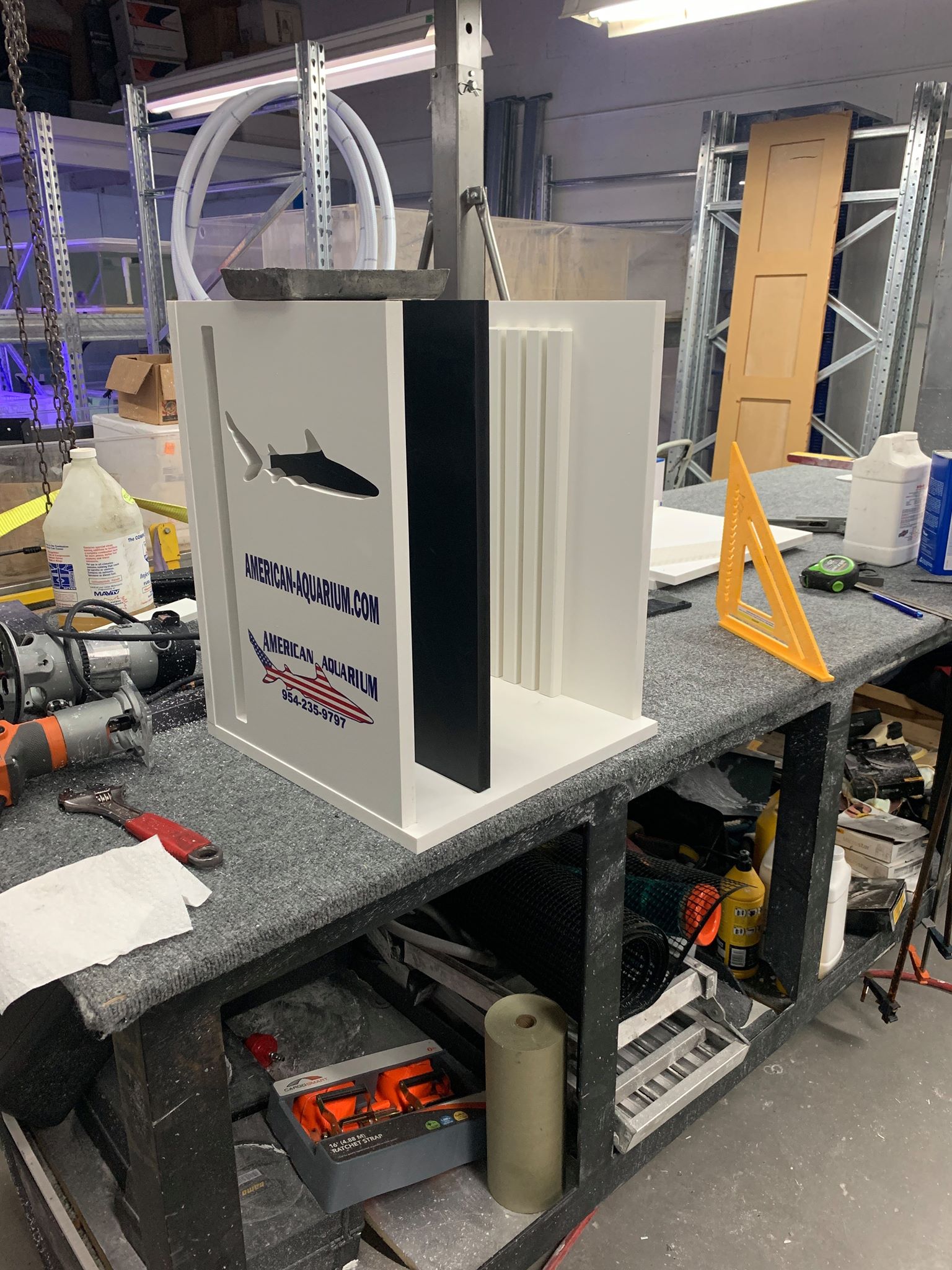BADES ( Biological Autotrophic Denitrification with Elemental Sulfur)
BADES takes place everywhere in the aquarium where a biofilm may grow. It may take place everywhere where HS is produced. If nitrate is present HS is used for denitrification, by which sulfur or and sulfate is produced, depending on the NO3/HS ratio. The produced sulfur is a reserve and will be used for denitrification when the NO3/HS ratio increases and HS availability is insufficient. ( ref:). This is the BADES process.
In marine aquarium conditions, it will be mainly Thiobacillus denitrificans which are responsible for denitrification using elemental sulfur. T.d. can use a lot of sulfur compounds and has an aerobic and an anaerobic pathway, it can use both oxygen and nitrate as an oxygen source. T.d. only grows on elemental sulfur if following an anaerobic pathway, needing nitrate. (ref
One may not underestimate the autotrophic denitrification capacity as a lot of HS may be produced in an aquarium and knowing +- 40% of the bacteria present in a normal nitrifying biofilm are following an anaerobic pathway. A normal nitrifying biofilm may export +- 15% of the total nitrogen processed in the biofilm due to natural denitrification. ( ref:) One may not underestimate the importance of the presence of nitrate for maintaining a healthy biofilm and a healthy aquarium.
Autotrophic denitrifiers do NOT need anoxic conditions (<0.5pppm DO) for using an anaerobic pathway, as do most heterotrophic denitrifiers. T.d. can switch pathways as needed in zones where oxygen is limited available, in zones where the oxygen supply can not follow the demand (OMZ, oxygen minimum zones), not very rare in a microworld where growth takes place at a logarithmic rate and BOD ( biological oxygen demand) is doubled from one moment to another. This means that +- 40% of the space in a normal biofilm can be used for denitrification if sulfur is made available and not only small anoxic zones.
In normal aquarium conditions +- 80% of nitrogen processed can be removed by using BADES columns.
Nitrogen management is made very easy by adding some elemental sulfur as a substrate for a growing biofilm. Passive or active nitrogen management, managing the nitrogen export rate as desired, just by making proper use of BADES.
One does not need anything special to apply BADES as sulfur is inert in seawater. One can put everywhere, as needed.
I prefer the application in a refugium or biofilter by wich nitrogen removal rates are made manageable and controllable.
BADES can be used in many different ways for exporting nitrogen.
For applying BADES one just needs some elemental sulfur and some filter cloth +- 0.5 -1cm thick.
BADES takes place everywhere in the aquarium where a biofilm may grow. It may take place everywhere where HS is produced. If nitrate is present HS is used for denitrification, by which sulfur or and sulfate is produced, depending on the NO3/HS ratio. The produced sulfur is a reserve and will be used for denitrification when the NO3/HS ratio increases and HS availability is insufficient. ( ref:). This is the BADES process.
In marine aquarium conditions, it will be mainly Thiobacillus denitrificans which are responsible for denitrification using elemental sulfur. T.d. can use a lot of sulfur compounds and has an aerobic and an anaerobic pathway, it can use both oxygen and nitrate as an oxygen source. T.d. only grows on elemental sulfur if following an anaerobic pathway, needing nitrate. (ref
One may not underestimate the autotrophic denitrification capacity as a lot of HS may be produced in an aquarium and knowing +- 40% of the bacteria present in a normal nitrifying biofilm are following an anaerobic pathway. A normal nitrifying biofilm may export +- 15% of the total nitrogen processed in the biofilm due to natural denitrification. ( ref:) One may not underestimate the importance of the presence of nitrate for maintaining a healthy biofilm and a healthy aquarium.
Autotrophic denitrifiers do NOT need anoxic conditions (<0.5pppm DO) for using an anaerobic pathway, as do most heterotrophic denitrifiers. T.d. can switch pathways as needed in zones where oxygen is limited available, in zones where the oxygen supply can not follow the demand (OMZ, oxygen minimum zones), not very rare in a microworld where growth takes place at a logarithmic rate and BOD ( biological oxygen demand) is doubled from one moment to another. This means that +- 40% of the space in a normal biofilm can be used for denitrification if sulfur is made available and not only small anoxic zones.
In normal aquarium conditions +- 80% of nitrogen processed can be removed by using BADES columns.
Nitrogen management is made very easy by adding some elemental sulfur as a substrate for a growing biofilm. Passive or active nitrogen management, managing the nitrogen export rate as desired, just by making proper use of BADES.
One does not need anything special to apply BADES as sulfur is inert in seawater. One can put everywhere, as needed.
I prefer the application in a refugium or biofilter by wich nitrogen removal rates are made manageable and controllable.
BADES can be used in many different ways for exporting nitrogen.
For applying BADES one just needs some elemental sulfur and some filter cloth +- 0.5 -1cm thick.



















